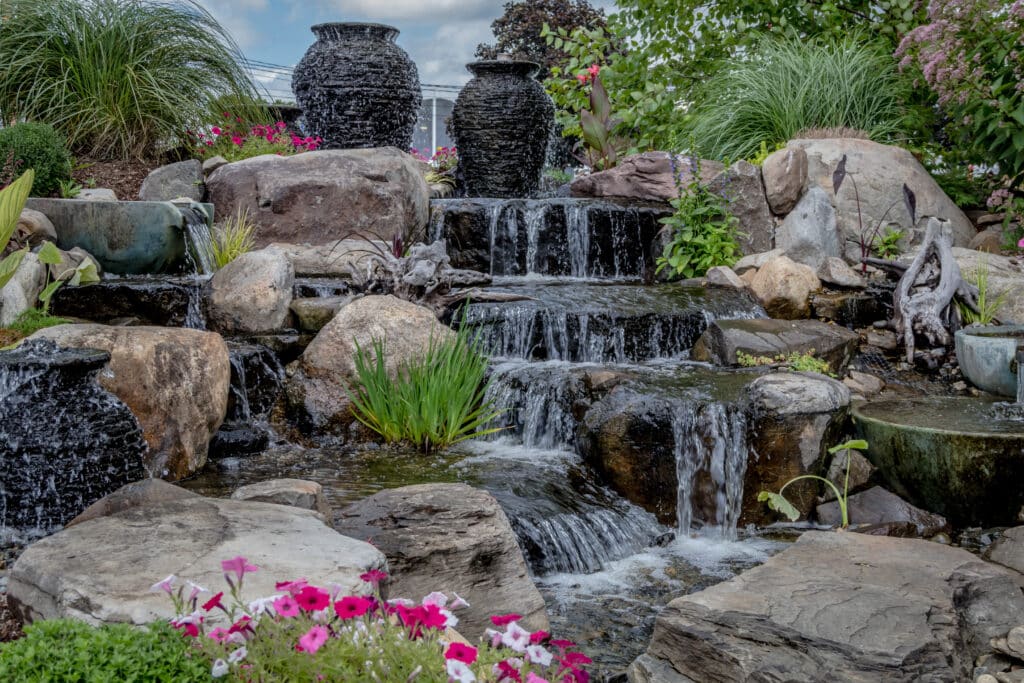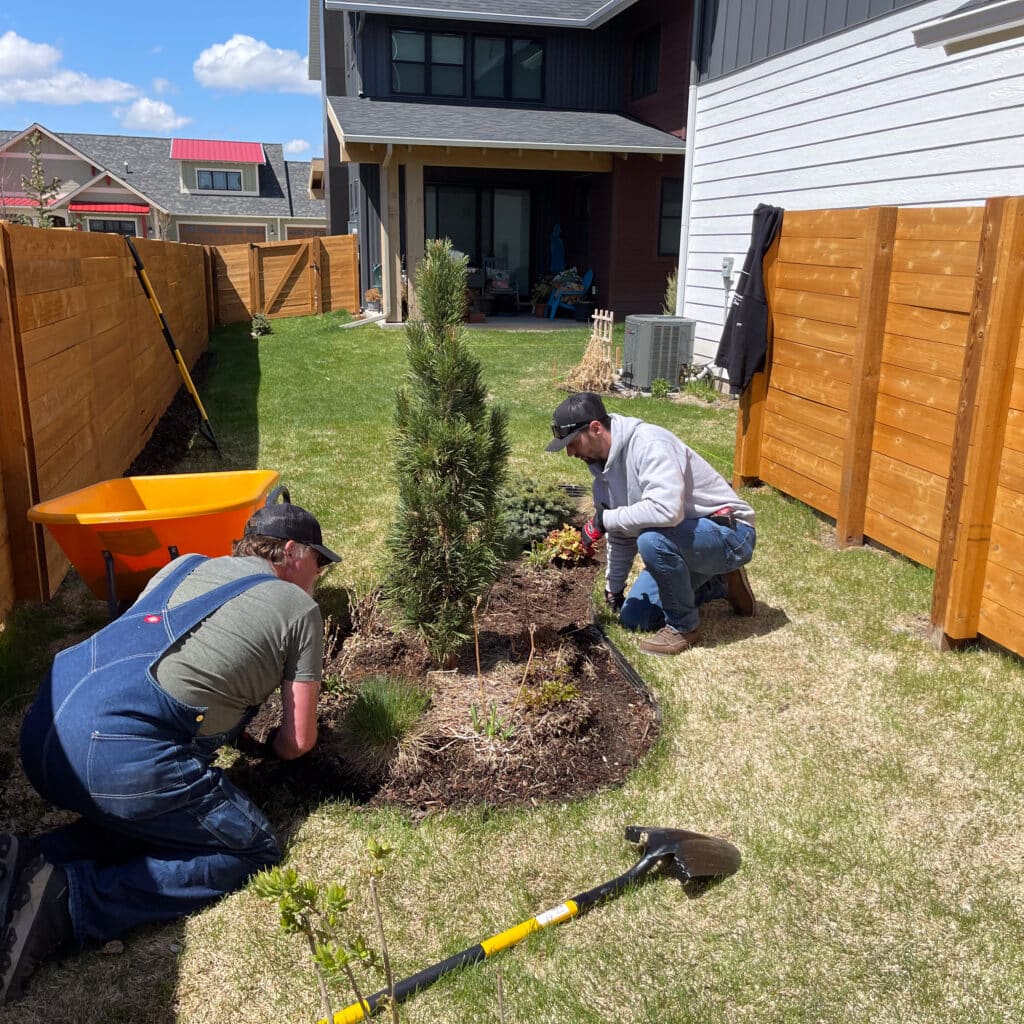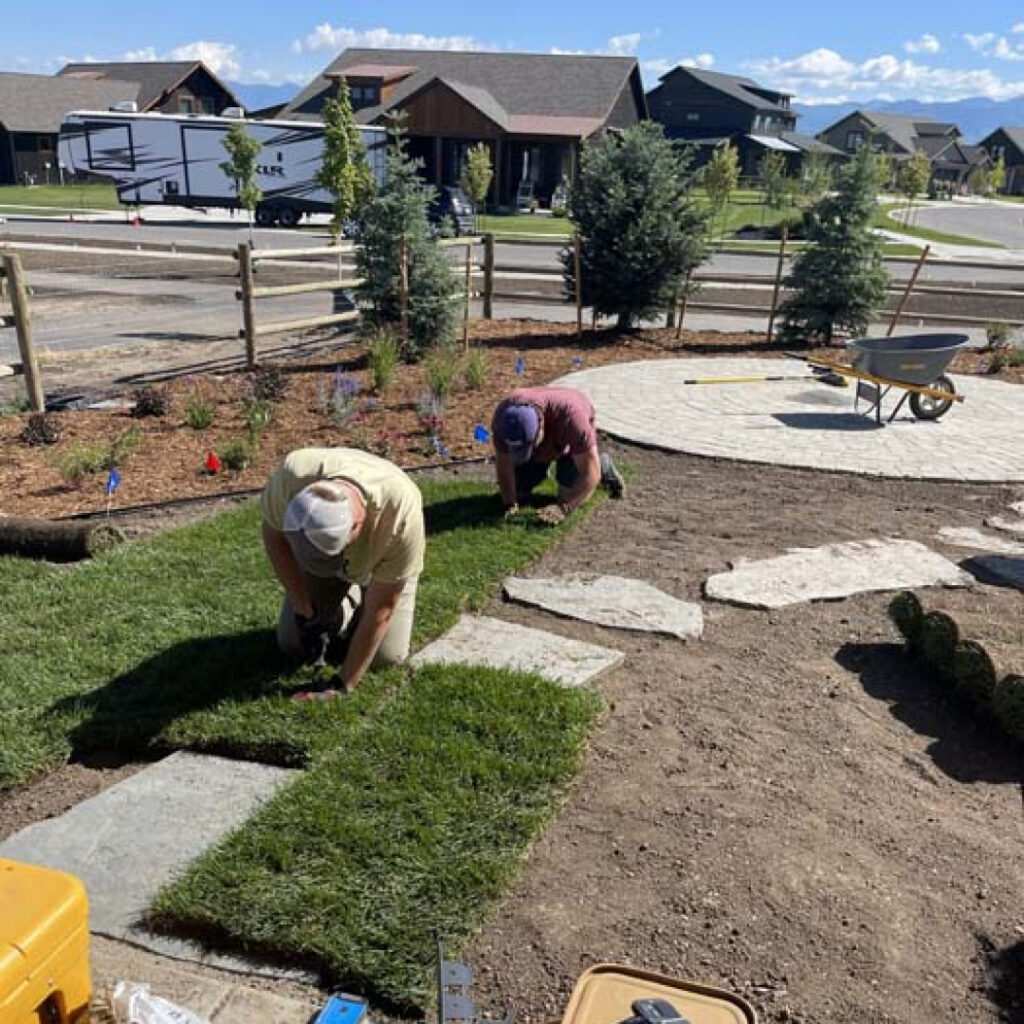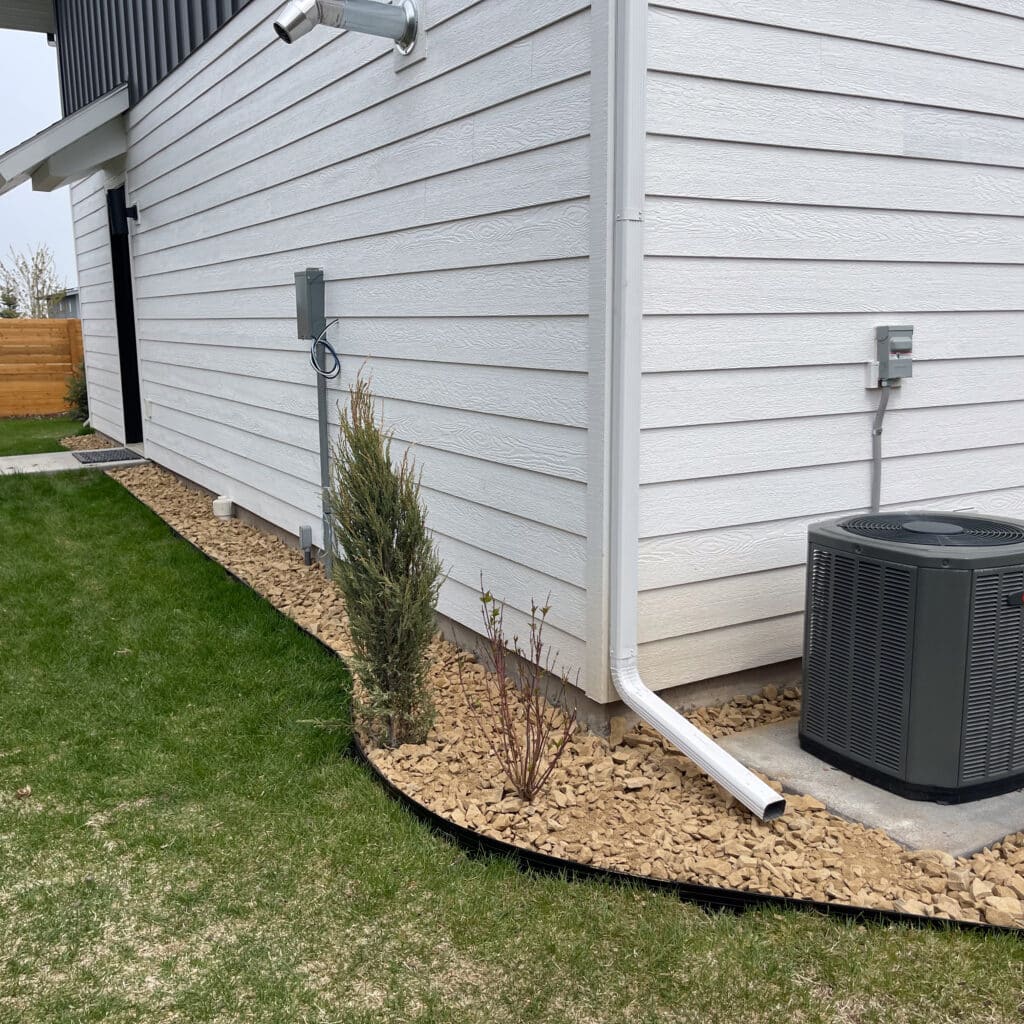Choose fountains, ponds, or water walls, and integrate them seamlessly into the hardscape design.
Incorporating water features into hardscaping can add a serene and visually appealing element to outdoor spaces. Whether it’s a small fountain, a pond, or a waterfall, water features can enhance the overall aesthetic and create a calming atmosphere. Here are steps and considerations for incorporating water features into hardscaping:
Preparation
1. Assessment and Planning
Site Analysis: Conduct a thorough site analysis to identify suitable locations for water features. Consider factors such as existing hardscaping, sunlight exposure, and proximity to utility lines.
Budget and Size: Determine the budget for the water feature project and decide on the size and scale of the feature based on available space and resources.
2. Choose the Right Water Feature
Fountains: Fountains are versatile and come in various styles and sizes. They can be standalone or incorporated into existing structures.
Fountains: Fountains are versatile and come in various styles and sizes. They can be standalone or incorporated into existing structures.
Waterfalls: Waterfalls create a soothing sound and are often used in conjunction with retaining walls or elevated hardscape features.
Streams: Incorporating a meandering stream into the hardscape can create a dynamic and naturalistic water feature.

3. Integration with Hardscaping
Natural Transitions: Ensure that the water feature integrates seamlessly with the surrounding hardscaping, creating a natural transition between different elements.
Choose Complementary Materials: Use hardscaping materials that complement the water feature. Natural stones, concrete, and other durable materials work well in conjunction with water features.
4. Professional Design
Hire a Landscape Designer: Consider hiring a professional landscape designer with experience in water feature design. They can create a plan that aligns with the overall aesthetic and functionality of the hardscape. Check out Top Dog’s hardscaping services today.
Permits and Regulations: Check local regulations and obtain any necessary permits before installing water features, especially if they involve significant alterations to the landscape.
Features
1. Water Circulation and Filtration
Permits and Regulations: Check local regulations and obtain any necessary permits before installing water features, especially if they involve significant alterations to the landscape.
Filtration Systems: Incorporate filtration systems to keep the water clean and clear. This is crucial for preventing algae growth and maintaining water quality.
2. Lighting
Submersible Lights: Install submersible lights within the water feature to create stunning visual effects, especially in the evenings.
Accent Lighting: Use accent lighting around the water feature to highlight its presence and create an inviting atmosphere.
3. Accessibility and Safety
Pathways and Bridges: Design pathways or small bridges that allow people to approach and appreciate the water feature up close.
Safety Measures: Incorporate safety measures, such as secure edging or railings, especially if the water feature is in a location accessible to children.
4. Drought-Tolerant Plantings
Surrounding Vegetation: Plant drought-tolerant vegetation around the water feature to enhance the overall landscape and minimize water consumption.
Aquatic Plants: Include aquatic plants within the water feature, not only for visual interest but also to contribute to a balanced ecosystem.
Ongoing Care
1. Maintenance Considerations
Clear Debris Regularly: Regularly remove debris, leaves, and any organic matter from the water feature to prevent clogs and maintain water clarity.
Seasonal Maintenance: Perform seasonal maintenance, including winterization if applicable, to protect the water feature during colder months.
2. Educate Users
Provide Information: If the water feature includes fish or other living organisms, provide information on caring for them and maintaining a healthy ecosystem.
Safety Guidelines: Display safety guidelines if the water feature is located in a public space to ensure responsible interaction.
3. Adapt to the Environment
Naturalistic Design: If aiming for a naturalistic look, design the water feature to mimic natural water sources found in the local environment.
Climate Considerations: Consider the local climate when designing the water feature. For example, in colder climates, features may need to be winterized.
Incorporating water features into hardscaping requires careful planning, design, and maintenance. When executed thoughtfully, water features can elevate the overall ambiance of outdoor spaces, providing a harmonious blend of nature and hardscape elements.



